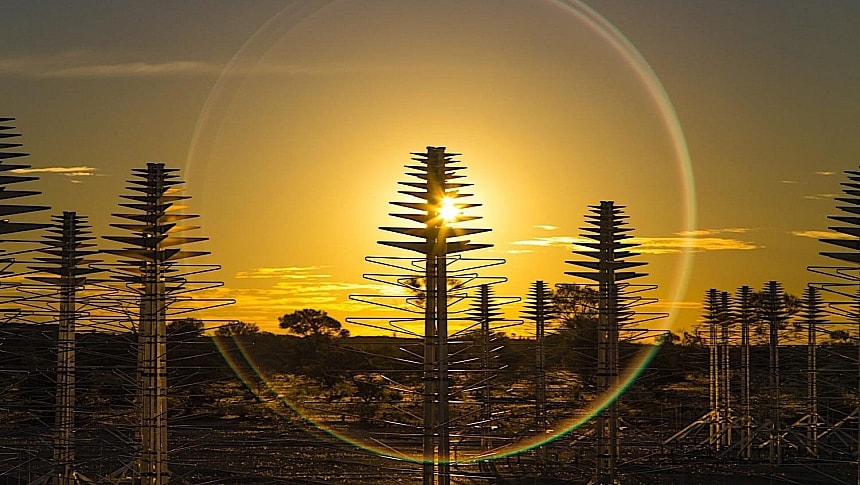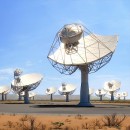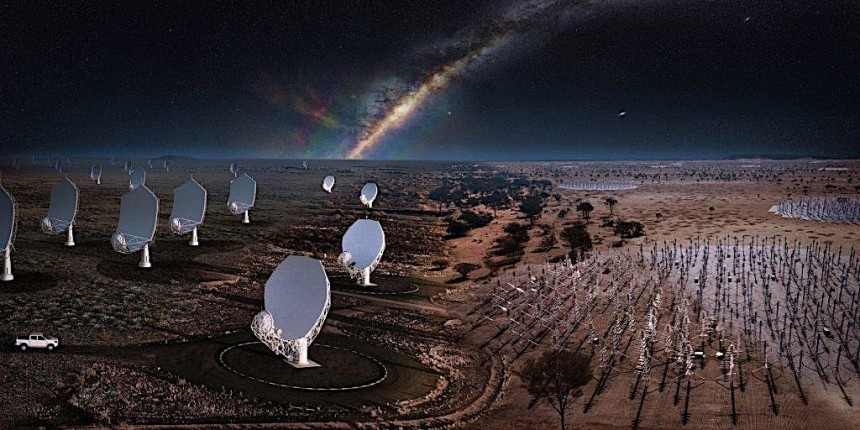They call it the Square Kilometre Array Observatory (SKAO), but its name is very deceiving. That's because it’s not a singular observatory, but one that virtually comes together when hundreds of thousands of space antennas on two continents work together to unlock the mysteries of the Universe.
On an official level, SKAO is described as an "international space exploration and astronomy project" backed by at least ten countries: Canada, Australia, China, Italy, The Netherlands, Portugal, South Africa, Spain, Switzerland, and the UK. Its main goal is to explore the Universe in ways that were not possible before and to give us a better understanding of its evolution and the laws of fundamental physics.
The observatory is ground-based, and it will rely on several arrays of antennas to get intimate data about the massive space that surrounds our planet. These antennas will come together to form to telescopes, one over in Australia (SKA-Low) and the other in Africa (SKA-Mid) - both in the Southern Hemisphere, from where the Milky Way can be studied best.
Each of the two telescopes is meant to cover different frequency ranges, and their missions are slightly different as well. Yet, when combining the data from the two, astronomers are hopeful they'll change the world as we know it.
That's the not-so-pretentious name the people behind the project gave a telescope unlike anything else you'll see in our world. It's being put together in Western Australia and its main mission is to look back in time to the beginning of the Universe.
SKA-Low is not a telescope in the traditional sense, meaning a dish of some kind. In fact, it's not even a singular piece of equipment: it will be comprised of no less than 131,072 tree-like antennas that are presently being spread on the lands of the Wajarri Yamaji Aboriginal Australians.
The 131,072 antenna trees will be grouped in 512 stations of 256 antennas each. Some of these stations will form the core of the system, which will be 0.62 miles (one km) across, but the rest of them will be placed in three spiral arms radiating from the core.
Because there are so many of them, these metal trees will form a positively massive forest, with the maximum distance between the two most distant antennas being 40 miles (65 km). Each antenna is 6.5-feet (two meters) tall.
The SKA-Low will be used to map the structure of the early Universe, being a witness to the birth and death of long-gone stars.
Over on the African continent, in a region of South Africa called Karoo, another forest of antennas is being put together. This one is much smaller in size, as it only comprises 197 antennas, but they will be spread out on a much greater area, with a max distance between antennas of 93 miles (150 km).
The component parts of the SKA-Mid are not wire trees, but traditional dishes. Although almost all of them are brand new, the network will also include the MeerKAT radio telescope, a 64-antenna-strong setup located in the Northern Cape.
SKA-Mid will be tasked with more complex jobs like timing pulsars and tracking gravitational waves, but more importantly than anything, it will be the one to look out for signs of alien life in the coldness of our galaxy.
Work on the SKAO project only truly began back in 2018, but talk about it has been around for much longer, from as far back as the 1980s. Given the complexity of the design (its makers describe it as the "most ambitious ground-based astronomy project ever undertaken"), it already involves a large number of partner companies and institutions (over 100 at per the latest count) from much more than just the ten countries mentioned at the beginning of this piece.
The latest to join the SKAO effort is Canadian company MDA Space. The name may be familiar, as most recently it came up as being involved in the Lunar Dawn Moon rover project together with Lunar Outpost, Lockheed Martin, General Motors, and Goodyear.
For the observatory, MDA will contribute something called the Correlator Beamformer. The fancy name describes an engine that should be capable of collecting and processing the data returned by the antennas in huge quantities. It should also allow for processing times thousands of times faster than average computer download speeds.
The system will go into the SKA-Mid telescope, where it will be used to "align and process the signals from each pair of dishes to allow the creation of images and other science products from the telescope."
At the time of writing plans are for the telescopes to reach a first light stage in 2027, and they should start operation at full throttle a year after that. So far we are not aware of any delays in the project, so everything seems to be on track.
The observatory is ground-based, and it will rely on several arrays of antennas to get intimate data about the massive space that surrounds our planet. These antennas will come together to form to telescopes, one over in Australia (SKA-Low) and the other in Africa (SKA-Mid) - both in the Southern Hemisphere, from where the Milky Way can be studied best.
Each of the two telescopes is meant to cover different frequency ranges, and their missions are slightly different as well. Yet, when combining the data from the two, astronomers are hopeful they'll change the world as we know it.
SKA-Low
SKA-Low is not a telescope in the traditional sense, meaning a dish of some kind. In fact, it's not even a singular piece of equipment: it will be comprised of no less than 131,072 tree-like antennas that are presently being spread on the lands of the Wajarri Yamaji Aboriginal Australians.
The 131,072 antenna trees will be grouped in 512 stations of 256 antennas each. Some of these stations will form the core of the system, which will be 0.62 miles (one km) across, but the rest of them will be placed in three spiral arms radiating from the core.
Because there are so many of them, these metal trees will form a positively massive forest, with the maximum distance between the two most distant antennas being 40 miles (65 km). Each antenna is 6.5-feet (two meters) tall.
The SKA-Low will be used to map the structure of the early Universe, being a witness to the birth and death of long-gone stars.
SKA-Mid
The component parts of the SKA-Mid are not wire trees, but traditional dishes. Although almost all of them are brand new, the network will also include the MeerKAT radio telescope, a 64-antenna-strong setup located in the Northern Cape.
SKA-Mid will be tasked with more complex jobs like timing pulsars and tracking gravitational waves, but more importantly than anything, it will be the one to look out for signs of alien life in the coldness of our galaxy.
Work on the SKAO project only truly began back in 2018, but talk about it has been around for much longer, from as far back as the 1980s. Given the complexity of the design (its makers describe it as the "most ambitious ground-based astronomy project ever undertaken"), it already involves a large number of partner companies and institutions (over 100 at per the latest count) from much more than just the ten countries mentioned at the beginning of this piece.
The latest to join the SKAO effort is Canadian company MDA Space. The name may be familiar, as most recently it came up as being involved in the Lunar Dawn Moon rover project together with Lunar Outpost, Lockheed Martin, General Motors, and Goodyear.
For the observatory, MDA will contribute something called the Correlator Beamformer. The fancy name describes an engine that should be capable of collecting and processing the data returned by the antennas in huge quantities. It should also allow for processing times thousands of times faster than average computer download speeds.
The system will go into the SKA-Mid telescope, where it will be used to "align and process the signals from each pair of dishes to allow the creation of images and other science products from the telescope."
At the time of writing plans are for the telescopes to reach a first light stage in 2027, and they should start operation at full throttle a year after that. So far we are not aware of any delays in the project, so everything seems to be on track.











